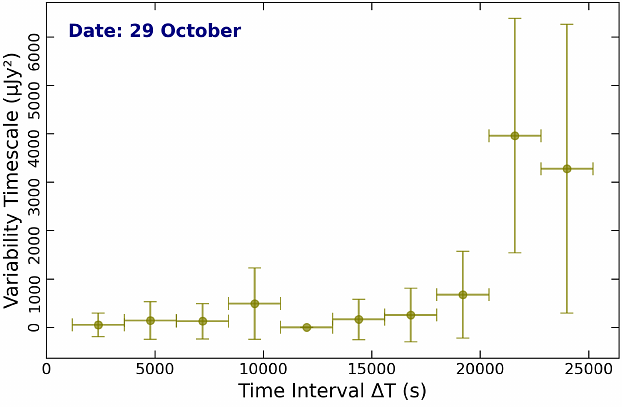Radio observations point to a moderately relativistic outflow in the fast X-ray transient EP241021a

Radio observations point to a moderately relativistic outflow in the fast X-ray transient EP241021a
Muskan Yadav, Eleonora Troja, Roberto Ricci, Yu-Han Yang, Peter Veres, Mark H. Wieringa, Brendan O'Connor, Yacheng Kang, Rosa L. Becerra, Geoffrey Ryan, Malte Busmann
AbstractFast X-ray transients (FXRTs) are short-lived X-ray outbursts with diverse progenitor scenarios, including compact object mergers, stellar core-collapses and tidal disruption events. The Einstein Probe (EP) has enabled the rapid discovery and follow-up of dozens of FXRTs, revealing that while some of them overlap with traditional gamma-ray bursts (GRBs), a larger fraction of FXRTs have no associated gamma-ray counterpart down to deep limits. The origin of these gamma-ray dark FXRTs and their connection to the diverse landscape of stellar explosions remains an open question, which can be tackled through the study of their multi-wavelength counterparts and environment. In this paper, we present long-term radio observations of the gamma-ray dark EP241021a, which exhibits sustained radio emission for over 100 days, placing it among the longest-lived radio afterglows. We detect signature of interstellar scintillation in early epochs, allowing us to constrain the angular size and Lorentz factor of the emitting region. Our observations point to an outflow that is at least mildly relativistic with Lorentz factor > 4. Afterglow modeling favors a moderately relativistic and collimated outflow interacting with a low-density interstellar medium. The derived beaming-corrected kinetic energy and low radiative efficiency are consistent with a standard relativistic explosion which did not produce bright gamma-rays. Alternatively, a highly-relativistic structured jet remains consistent with our observations if seen substantially off-axis. In the latter case, the initial X-ray flare detected by EP would be caused by the slower ejecta from the lateral wings intercepting our line of sight rather than by traditional prompt-emission mechanisms within the jet core.